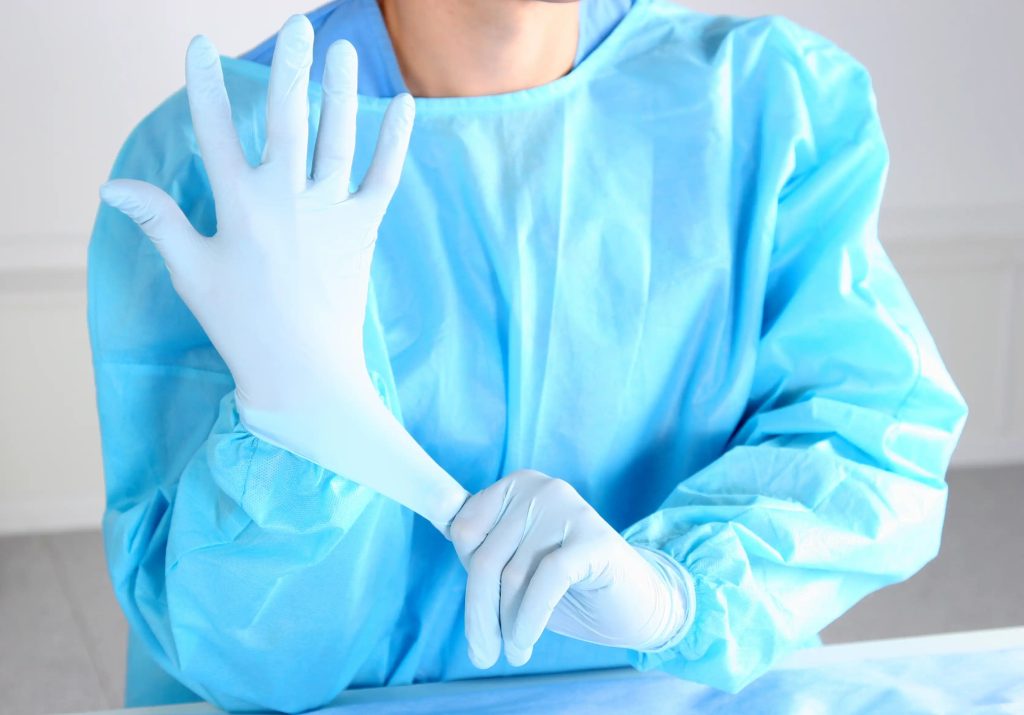Using infection control gloves in hospitals, medical and dental clinics, and similar settings has long been protocol and practice to prevent the transmission of infection and disease. But just how effective are these gloves?
Many people assume that good quality latex or nitrile gloves protect the wearer (and others) 100% from bacteria, viruses, and other pathogens that can be spread via contact with the hands. This, however, is not the case.
No glove delivers complete protection against hand contamination.
According to Hand Hygiene Australia, microorganisms can be transmitted to the hands of healthcare workers (and potentially onto others, including vulnerable patients) through tiny defects in the gloves or via hand contamination during glove removal. Clinical studies have even found that the microorganisms that colonise patients are recovered from the hands of around 30% of healthcare workers who have worn gloves during patient contact. This represents a significant risk to healthcare staff, patients, and the general community.
This statistic in no way negates the use of disposable gloves for infection control – and between 70%-80% of pathogen and other microorganism transmission is prevented by correct PPE glove use.
While the use of infection control gloves is imperative in any healthcare or similar setting, it does not nullify the importance of proper hand hygiene. This means that correct hand washing practice with soap and water before putting gloves on as well as after removing them is the first line of defence against disease transmission.
Hand Hygiene Australia recommends five distinct “moments” at which hands should be washed and sanitised in any healthcare setting. The aim of these is to minimise microorganism transmission risks between healthcare workers, patients, and the wider environment and community:
1. Before touching a patient
2. Before any clinical procedure.
3. After any clinical procedure or exposure risk to bodily fluid
4. After touching a patient
5. After touching the area surrounding a patient.
Infection Control – Correct Glove Use
· Single-use gloves must be discarded. They should never be washed, reused, or reapplied.
· Gloves should be worn whenever there is a practicable risk of blood or other body fluids (saliva, urine, mucous, serum, pus, etc) contaminating the hands of healthcare workers.
· They should also be worn whenever required to comply with a relevant infection control policy.
· A healthcare worker with any damage to the integrity of the skin on their hands (cut, scratch, scrape, graze, blister, burn, etc) should cover the wound with a suitable dressing and also wear gloves.
· Gloves should be changed between patients for any care activity.
· Gloves should also be changed during the care of a single patient where appropriate to prevent cross-transmission of pathogens between body sites.
· Gloves and hand hygiene stations must be made available within close quarters of the patient, especially in contact-precaution settings and isolation rooms.
· Hand hygiene (washing, drying, sanitising) must be carried out before gloves are put on and after gloves are removed.
Remove gloves properly!
The exterior surface of used gloves should NEVER touch your bare hands.
Remove as follows:
1)Use the left hand to grab the outer side of the right glove at the wrist.
2)Pull the glove toward your fingertips – it will turn inside out.
3)Hold onto the inside surface of the empty glove with your left hand.
4)Put 2 right-hand fingers into your left glove and pull it towards your fingertips until you have pulled the glove inside out and off your right hand. The right-hand glove will now be inside the left glove.
5)Throw the gloves away appropriately.
Nitrile-based gloves are a superior option for use in healthcare and similar settings. They are latex-free, low-allergenic, and have higher puncture resistance and durability than latex gloves. Whichever type of gloves you use, however, know that by wearing them appropriately you are doing your bit to protect yourself and others.


